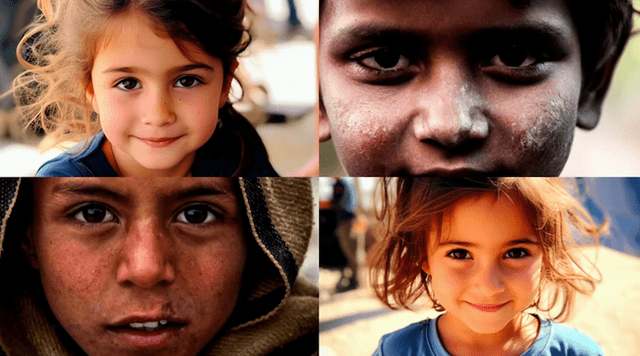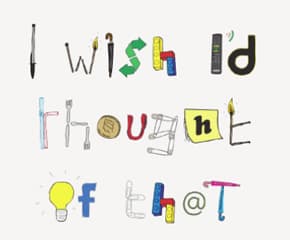Charity Right: ‘AI vs real people’ image test
- Exhibited by
- Jamal Abbas
- Added
- May 28, 2025
- Medium of Communication
- Online
- Target Audience
- Individuals
- Type of Charity
- International food programme
- Country of Origin
- UK
- Date of first appearance
- 2023
SOFII’s view
There is a lot of talk in the sector about the potential uses of artificial intelligence (AI) in fundraising. In fact in an October 2023 article, Charity Digital said:
‘As AI becomes rapidly more advanced, it’s opening up new ways of working for fundraisers – saving time, money, and human brain power.’
In this case study, Jamal Abbas shares how one charity set out to discover what worked better in an online fundraising campaign, AI generated images or those taken by their team of skilled photographers. But how could they know for sure? By doing a split test of course.
Keep reading to find out more as Jamal explores the impact of AI on fundraising, imagery, ethics and analytics.
Creator / originator
Charity Right, a British charity dedicated to providing school meals to children living in some of the most vulnerable communities around the world.
‘Our aim is simple, keep kids in school. A child will stay in school if they can receive a meal there. The longer the child stays in school, the more chance they have of obtaining an education and breaking themselves out of the generational cycle of poverty they’re born into.’ – Charity Right
Summary / objectives
Charity Right wanted to explore whether AI-generated images could be just as effective – or even more effective – than real photography in driving donations online. With growing interest in AI and tight creative budgets, this test aimed to discover:
- Which type of imagery performs better in digital fundraising?
- How do donors respond emotionally to AI vs. real images?
- Could AI images be a viable, ethical alternative to traditional photo shoots?
Background
In 2023, AI image generation tools like Midjourney exploded in popularity, offering charities a fast and cost-effective way to create stunning visuals.
Charity Right – a food programme working in Sudan, Pakistan, and beyond – wanted to see if these tools could genuinely compete with the emotional power of real photography taken on the ground, in the countries where they were helping fight hunger.
To test this, they created a simple A/B split test campaign on Meta and ran the campaign during Ramadan in 2023.
One ad used a real photo of a girl in Sudan captured by their in-house team. The other featured an AI-generated version of the same scene, created using prompts based on the real image.
The aim was to test one variable only: the image. Everything else remained constant – copy, call-to-action, targeting, and budget.
Results
Across all the images that Charity Right tested, the AI-produced images and the real photography produced almost identical fundraising revenue. The CTR (click through rate), CPM (Cost Per Mille, also known as Cost Per Thousand) and CPC (cost per click) were all very similar. And, the AI images got considerably more impressions than the real images.
This suggests that although real photos are more authentic to us as fundraisers, in digital campaigns, AI images can also align with what the algorithm wants to show and what audiences/donors will engage with.
Influence / impact
But what about the ethics of using AI images in fundraising?
After the campaigns finished, Charity Right shared the fact that some of the images were generated by AI and created a Reddit feed to ask the public what they thought. The insights were fascinating and the test clearly divided opinions.
Some people loved it as they saw the cost-saving benefits, which meant more resources could be spent on helping beneficiaries. Others felt like it was dishonest and unethical to use images generated by AI.
Merits
- Charity Right were one of the first Muslim charities to test AI in their fundraising creative.
- The campaign challenged industry norms and started a discussion around authenticity and ethics.
- Their data made it clear that using AI images produced almost identical results to real images, with the added benefit of huge cost savings.
Final notes
This campaign doesn’t just test images – it tests assumptions.
Often in the charity sector, we argue over what’s ethical or what looks good, without asking what actually works as well. This A/B test gave Charity Right the confidence to save costs and create content within minutes, all without affecting their fundraising efforts.
They now use AI images for rapid testing and top-of-funnel ads, reserving real photos for storytelling that builds long-term trust.
Charity Right said:
‘What more can we do to protect the dignity and identity of the children we work with, given the increased connectedness of the world we now live in? How can we do this while ensuring that we continue to spend as efficiently as possible and that as much of your donation goes towards providing school meals? How do we balance achieving this with the safety and well-being of our team who sacrifice their time, relationships and health to travel far and beyond to capture the essence of our work through photography and videography?’
These are some of the questions that frequently cause robust debates within our team here at Charity Right. This campaign helped us get closer to answering these questions.’
Further information and resources
SOFII understands that many fundraisers are unsure about using AI in fundraising.
With this in mind, SOFII partner Blackbaud has outlined six practical tips for harnessing the potential of AI. Click here to download your free tip sheet.
Editor’s note: Jamal Abbas discussed this campaign during his seven-minute presentation at I Wish I’d Thought of That (IWITOT) 2023.
© IMAGES: From Jamal Abbas and Charity Right
 View original image
View original image
 View original image
View original image

















